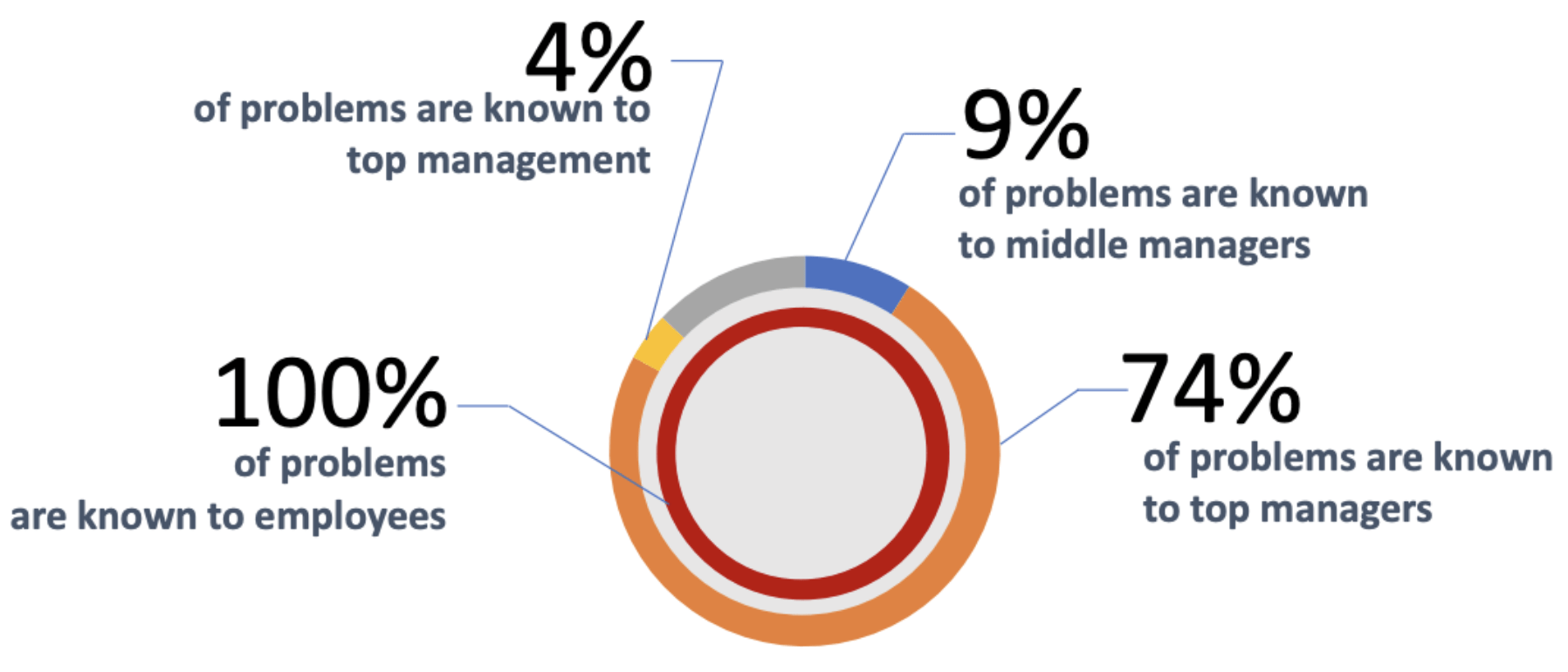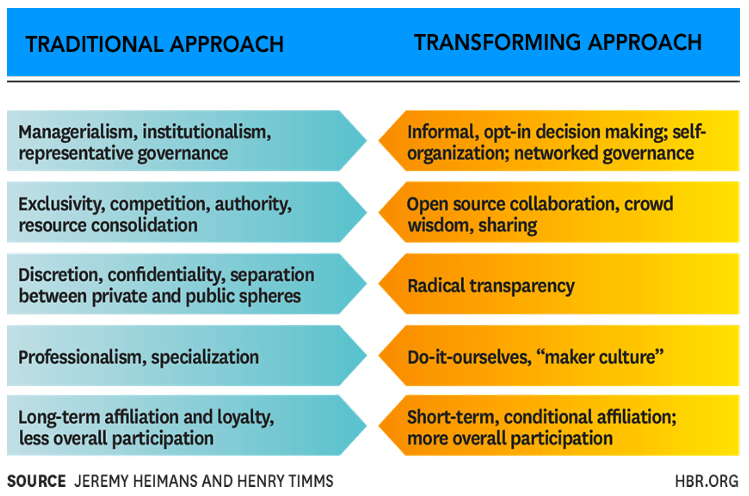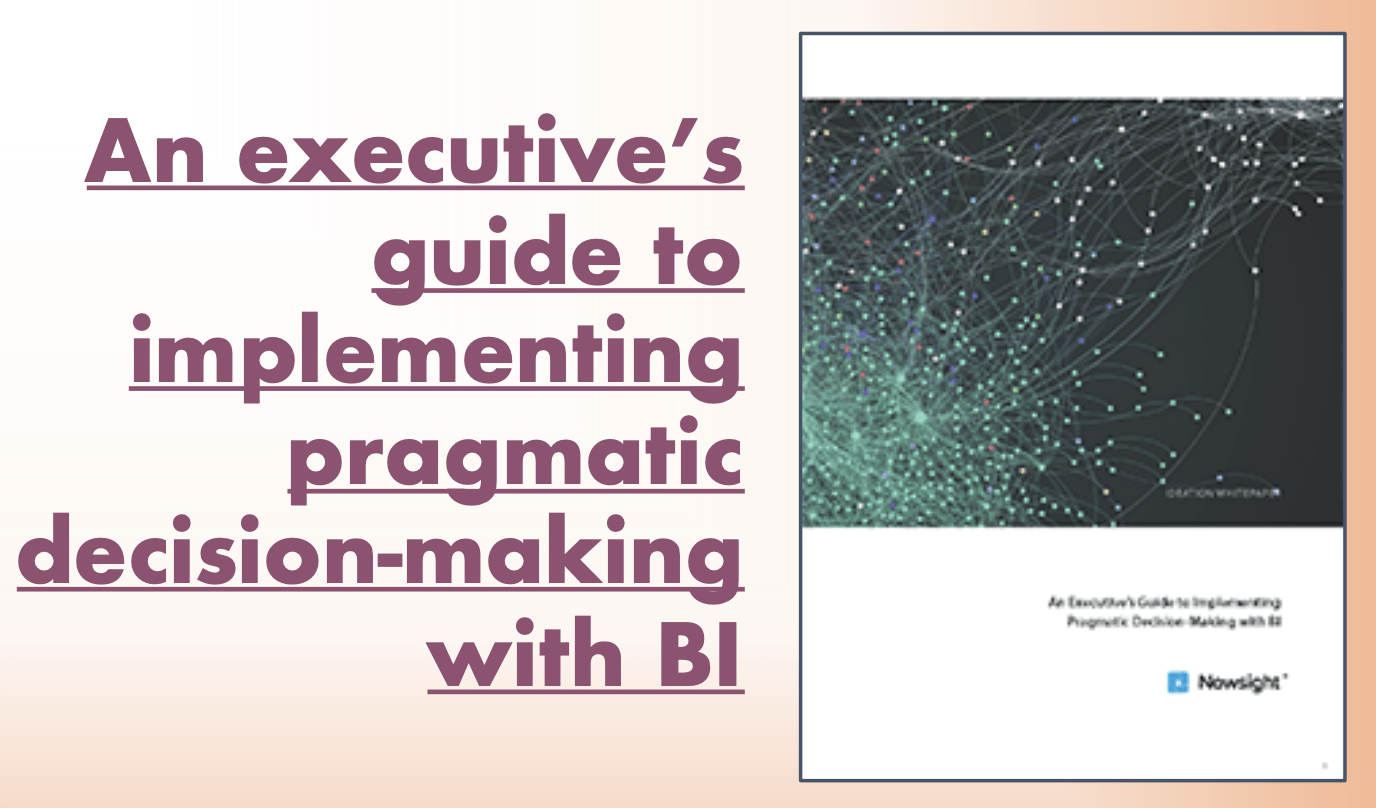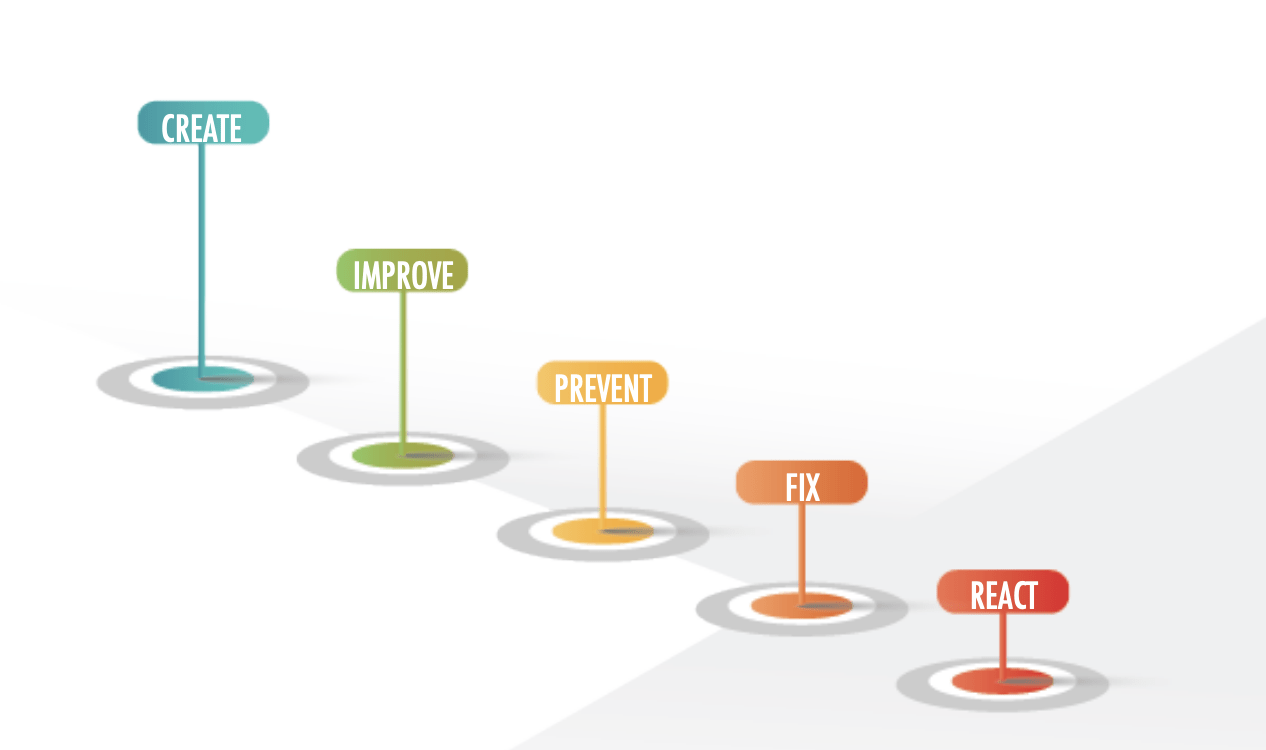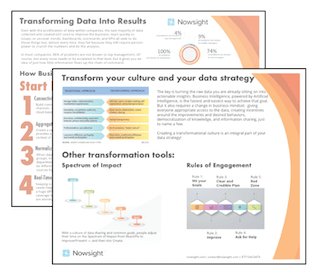Even with the proliferation of data within companies, the vast majority of data collected and created isn’t used to improve the business, react quickly to issues, or uncover trends. Dashboards, scorecards, and KPIs all seek to do those things but, almost every time, they fail because they still require person-power to crunch the numbers and do the analysis.
In most companies, 96% of problems are not known to top management. Of course, not every issue needs to be escalated to that level, but it gives you an idea of just how little information flows up the chain of command.
